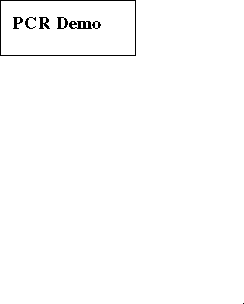Visual identification by a SEAL team (not seeing his face but actual facial recognition technology), and confirmation by a local is good, but not always enough to satisfy everyone.
Here's how they were able to determine the body was really Osama Bin Laden: PCR.
Polymerase chain reaction (PCR) means scientists copy a stretch of DNA (deoxyribonucleic acid) using heating and cooling and then add fluorescent dyes to compare specific spots on that chunk of DNA with a sample from a relative or an older sample. PCR has been in existence for decades, since 1983, and Kary Mullins received a Nobel Prize for it in 1993, so it has stood the test of time.
A gene's building-block sequence is the order of appearance of 4 deoxyribonucleotides within that stretch of DNA - Adenine, Thymidine, Cytosine and Guanine, which are the A, T, C and G you often see. The arrangement of the letters is the gene sequence. DNA is double-stranded (except in some viruses) and two strands pair with one another and each letter in a strand will pair with only one kind of letter across from it in the opposing strand: A with T and C with with G, for example.
The first step for PCR is to create "primers" about 20 letters-long, using each of the 4 letters, and a machine which can link the letters together in the order desired by adding one letter-at-a-time to the machine (DNA synthesizer).

For most labs PCR takes about two weeks, though it can be done in a day. Contamination is often the biggest concern but since they brought Bin Laden's body back with them, they didn't have field conditions to worry about.
Want to do your own PCR? SUNY Plattsburgh in upstate New York has a nifty tutorial.
After you heat the DNA to separate the paired strands and your primers, as mentioned above:
1. Take three tubes and mark them 10-2, 10-4 and 10-6. Put 199 ul of H2O in the 10-2 tube and 990 ul the 10-4 and 10-6 tubes. Put 2 ul of your original plasmid in the 10-2 tube and mix well. Put 10 ul of the solution from the 10-2 tube in the 10-4 tube and mix well. Put 10 ul of the solution from the 10-4 tube in the 10-6 tube and mix well. Each of these is a 100 fold dilution.
2. Label 2 PCR tubes (the 0.65 ml tubes provided) 10-4 and 10-6.
3. Set up the following reactions in each of the tubes (I will be adding the buffer mix and Taq polymerase):
34.5 ul H2O 1.0 ul diluted DNA solution 14.0 ul Buffer mix (buffer, primers, MgCl2, and dNTPs) 0.5 ul Taq polymerase 50.0 ul Total
4. Place these three tubes in the thermocycler. You have one of those, right?After you have run the agarose gel, note the extent to which you diluted the DNA in the reactions. Assuming that your original plasmid stock was approximately 1 ug / ul (which is probably a good estimate for most of you), the 10-6 dilution had a concentration of 1 femtogram / ul. This means that your 10-6 PCR reaction only has about 1 picogram of DNA template. (Imagine - one picogram!) For this reason, on the agarose gel you should only see the amplified fragment and not the DNA from the original template.




Comments